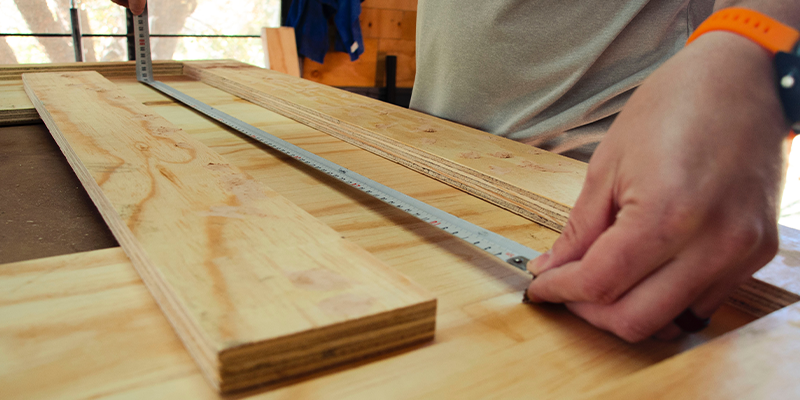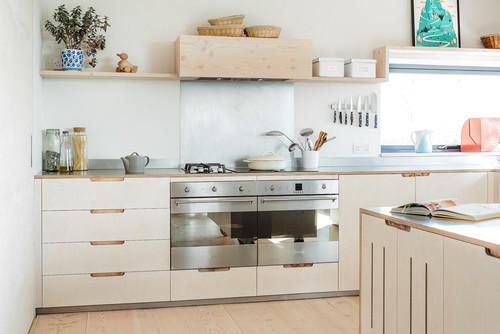Will Water Ruin Plywood?

Incredibly popular with both DIYers and experienced tradespeople, plywood is a highly reliable building material perfect for an extensive range of different projects. From building floors and walls to constructing beautiful furniture and even making Christmas decorations, plywood features a range of properties that make it so versatile in its usability.
Although incredibly useful and generally very durable, plywood can start to cause problems when water is added into the equation. With plywood so commonly used, it is important that you understand the effects that different conditions can have on its structure and dependability. Therefore, in this handy article we will be discussing in further depth, can plywood get wet, and what happens if it does?
Table of Contents
- What Is Plywood?
- What Happens if Plywood Is Stored in Wet Conditions?
- How Do I Dry Out Plywood?
- What are the Different Classes that Plywood Comes in?
What Is Plywood?
Plywood is an engineered wood form that is made up of three or more thin layers (or plies) of wood glued together in alternating directions using a high-strength adhesive. This alternating pattern creates something called ‘cross graining’. Cross-graining is a technique utilised to ensure that the wood maintains a robust structure with no risk of shrinkage or expansion as well as preventing splitting when the sheets are nailed at the edges. You will find that the thicker the plywood, the more layers or ‘plies’ it incorporates which is a good way of determining its durability level. Check out our handy article What is Plywood? to answer any and all of the questions you may have related to its benefit’s, uses and even its history.
What Happens if Plywood Is Stored in Wet Conditions?
Generally, if common plywood gets wet for an extended period of time, it can swell and lose shape which eventually leads to the layers of wood splitting apart. This often occurs when plywood is stored outside for even a short timeframe before a project begins. However, this issue can be fixed. If the plywood is dried out quickly and efficiently, it can remain unaffected and undamaged in the long term, maintaining its full strength and durability for safe and reliable use.
How Do I Dry Out Plywood?
Really, there is no specialist method or technique to drying out plywood. You just need to make sure there is as much air circulation to all sides and edges of the sheet as possible, as these are the key areas in need of drying. If you are drying the wood outdoors, it is a good idea to place it in an area with direct sunlight as this can speed up the process significantly. If you need to dry the plywood indoors, then it is advised that you turn the central heating on or use a dehumidifier if you own one.
In some cases, you may find that the plywood becomes too wet when you have already started to build the wood into a structure. If the edges and sides are both wet and covered, then the wood will struggle to dry completely. If you can, you should remove the wood as soon as possible from the structure and allow it to dry thoroughly before reconstructing.
What are the Different Classes that Plywood Comes in?
Anytime you purchase plywood, you should find that the bonding quality and wood species it is made from, is specified. This will be referred to by one of the codes below:
Bonding/Glue:
The first code refers to the bond or glue used to make the wood and its suitability to different conditions:
- EN 314-1: Ideal for dry conditions
- EN 314-2: Suitable for humid conditions or for short term resistance to weather conditions
- EN 314-3: Can withstand weather conditions and water over sustained periods of time
These bonding classes are decided through extensive laboratory testing in which varying boards of plywood are tested in different simulated weather conditions.
Wood Species
The second code refers to three British Standards performance classes that determine the moisture resistance of a type of plywood:
Class 1 (EN 636-1): Best suited for interior use in dry conditions
Best End Use: Warm roofs, internal timber frame & partitions walls, intermediate floors
Class 2 (EN 636-2): Can be used outside if it is treated or covered (suitable for humid conditions)
Best End Use: Cold roofs, ground floors, external timber frame walls
Class 3 (EN 636-3): Can be used outside
Best End Use: Suitable for use in fully exposed service conditions
Every form of plywood is required to fully comply with one of these three classes for construction use. This class rating incorporates both the quality of the bond as well as the durability and resistance of the wood species.
To Conclude
When it comes to choosing plywood, the best way to ensure it is the right choice for your specific project is by always checking for the class codes we have mentioned. As all types of plywood are required to reference these classes, you can always be sure you are using the correct kind with the appropriate properties for your job. If you ever find that your plywood does get too wet, then make sure you follow the steps to dry it out as soon as you can.
Here at Roofing Megastore you can find a range of high-quality plywood available in a multitude of different sizes to choose from. We also supply other timber materials including OSB, roofing battens, and chipboard if they are more suited to your project.
If you have any other questions or queries regarding plywood sheets, don’t hesitate to get in touch by calling 01295 565 565 or by using our handy live chat.
But for now take some inspiration from some of the pictures below showcasing where it has been used to create some fantastic interior and exterior designs:

Contemporary Eco Kitchen in the Cotswolds | Sustainable Kitchens

Waiheke Island Clifftop House with plywood | Box Design & Build

View Residence | Mohler & Ghillino Architects
Contemporary Porch, Rustic Verenda, Seattle | Lawrence Architecture
